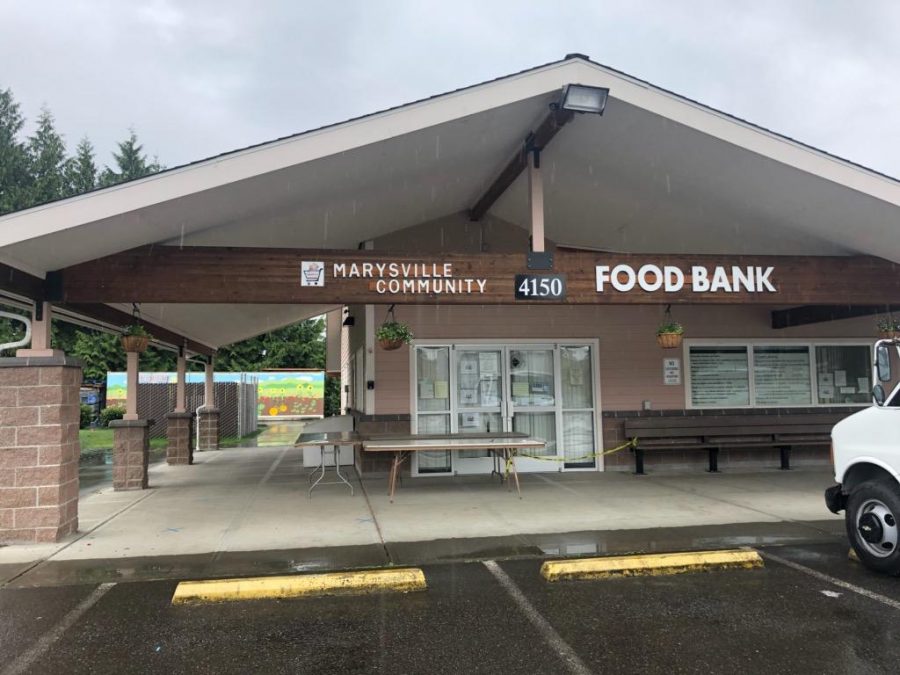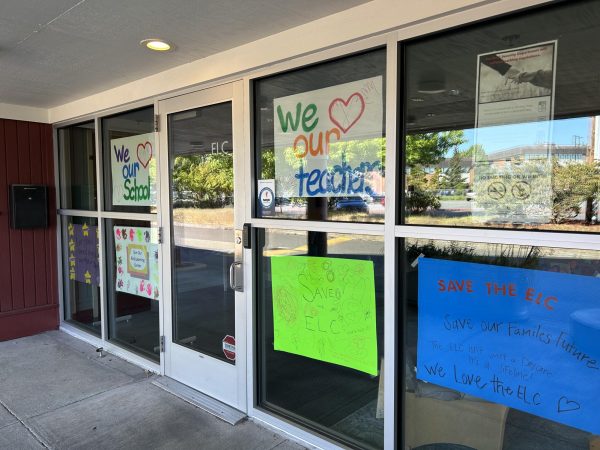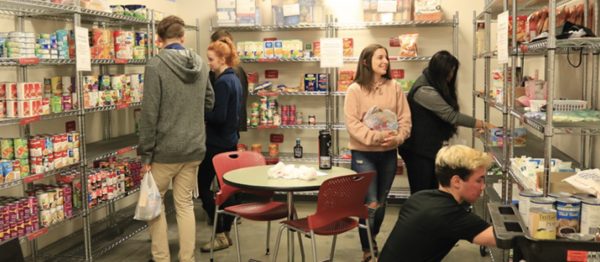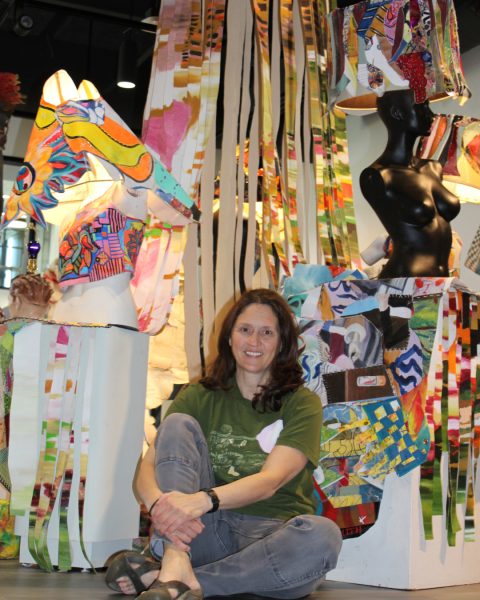Students Struggling With Food Insecurity
During this COVID-19 pandemic, many students are struggling with finances and food insecurity.
Marysville Food Bank, located at 4150 88th St NE, Marysville WA 98270. The location remains roped off even after hours in order to follow social distancing practices.
The agencies and organizations undertaking the challenge of getting food to vulnerable citizens in the coronavirus hotspot of Washington, are starting to see a strain on the food supply and their clients.
Washington’s Employment Security Department reporting a March unemployment rate of 5.1% or 11,100 jobs suggests what our students are currently saying – their income has disappeared but not their hunger.
“I’ve been using my local food bank and the Food Pantry at EvCC since the start of March when my hours began getting cut with coronavirus fears. I’ve seen the increase in people and the decrease in availability; most notably at the local food bank,” said full-time EvCC student Madelyn.
As food banks are being utilized by extraordinary numbers of people in an economy that has been stifled to fight the pandemic, Madelyn and others wonder at the idea of a food bank shortage.
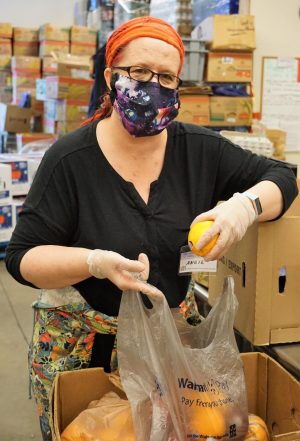
Food bank volunteer, Angie Winter loading food in preparation for distribution at Marysville Food Bank.
All the local food banks are running low, confirmed Angie Winter, a volunteer for the Marysville food bank. “We’ve seen many people visit us that have never needed our services before. It’s very humbling to see how much need is out there,” said Winter. While this does not mean there is a current shortage, it does verify the strain on the social safety nets from the rapidly increasing demand.
Another student of EvCC, Michelle, was faced with a problem that is a little different from traditional students. She’s a married, full-time student with two children in elementary school. When Washington’s public schools closed, she suddenly had to plan how to feed herself and children three times a day. “I had to quit my job due to being in the high-risk category for Coronavirus and the only reason I’m taking classes right now is to receive the FAFSA money.”
Michelle said she wasn’t able to make her financial situation work for much longer when she heard that her school district was offering a breakfast and lunch program as a way of continuing to provide for the surrounding area’s children.
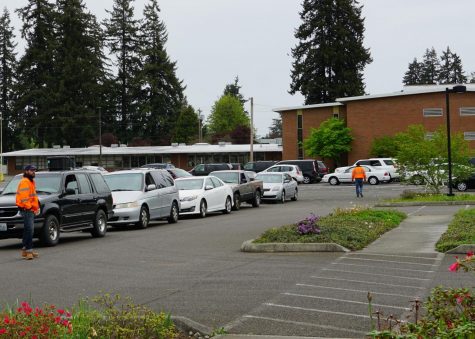
Over 100 cars filled the parking lot Tuesday, April 28, waiting for distribution at Marysville Food Bank.
“As a family of four and one source of income we try to be careful and resourceful. Each and every dollar matters. To save money and gas, every other day I drive to the school’s free meal distribution site; it’s just too far to walk. I wasn’t judgmental of those needing to use a food bank, but I didn’t think it was something I would ever have to use. Yet here I am,” said Michelle.
Michelle isn’t the only one who is using the school district resource. The Marysville food bank partners with their local school district. As clients are asked to limit their visits to once a week to help with supply and demand, anyone with children under 18 is encouraged to contact the Marysville/Tulalip district directly for info on the free student lunch program provided by the district.
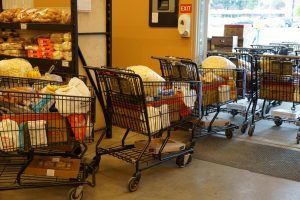
Marysville Food Bank grocery carts lined up for distribution.
There isn’t a clear-cut answer as to when the food insecurity crisis will be corrected, but when looking at what’s working currently, we see positives with social programs and community engagement. Madelyn said she hoped progressive ideas and food security will come to the forefront of more people’s minds to stop this from worsening.
“Now more than ever we need to be asking the local government what did you do during this crisis? Do you have a food policy?” said Madelyn.
The EvCC Food Pantry is currently operating remotely during Spring Quarter. To schedule an appointment for this free assistance contact [email protected].
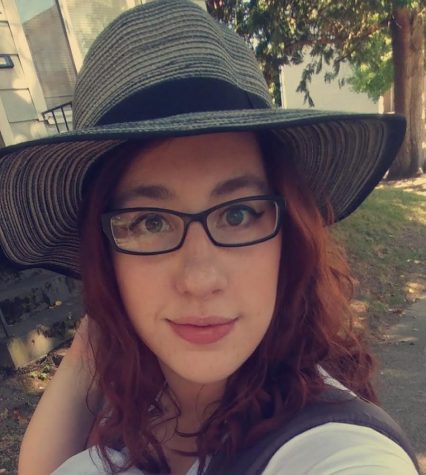
Which words or phrases do you most overuse?
Totally and rad. I love those words and couldn't erase them from my vocabulary if I wanted to at this point.
What...
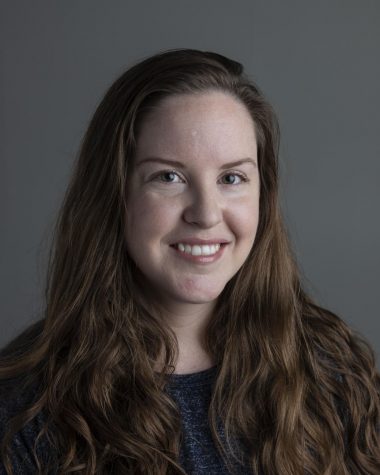
What are you doing when you aren't at The Clipper?
Usually spending time with my husband and 3-year-old son.
What is something you think everyone...

